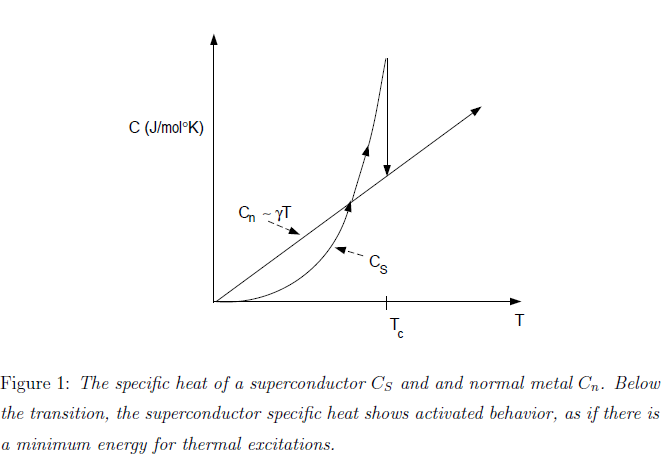Introduction: Evidence Of A Phase Transition
Introduction: From what we have learned about transport, we know that there is no such thing as an ideal (ρ = 0) conventional conductor. All materials have defects and phonons (and to a lessor degree of importance, electron-electron interactions). As a result, from our basic understanding of metallic conduction ρ must be finite, even at T = 0. Nevertheless many superconductors, for which ρ = 0, exist. The first one Hg was discovered by Onnes in 1911. It becomes superconducting for T < 4.2o K. Clearly this superconducting state must be fundamentally different than the "normal" metallic state. Ie., the superconducting state must be a different phase, separated by a phase transition, from the normal state.
Evidence of a Phase Transition: Evidence of the phase transition can be seen in the specific heat (See Fig. 1). The jump in the superconducting specific heat Cs indicates that there is a phase transition without a latent heat

(i.e. the transition is continuous or second order). Furthermore, the activated nature of C for T < Tc
Cs ≈e-βΔ (1)
gives us a clue to the nature of the superconducting state. It is as if excitations require a minimum energy Δ.